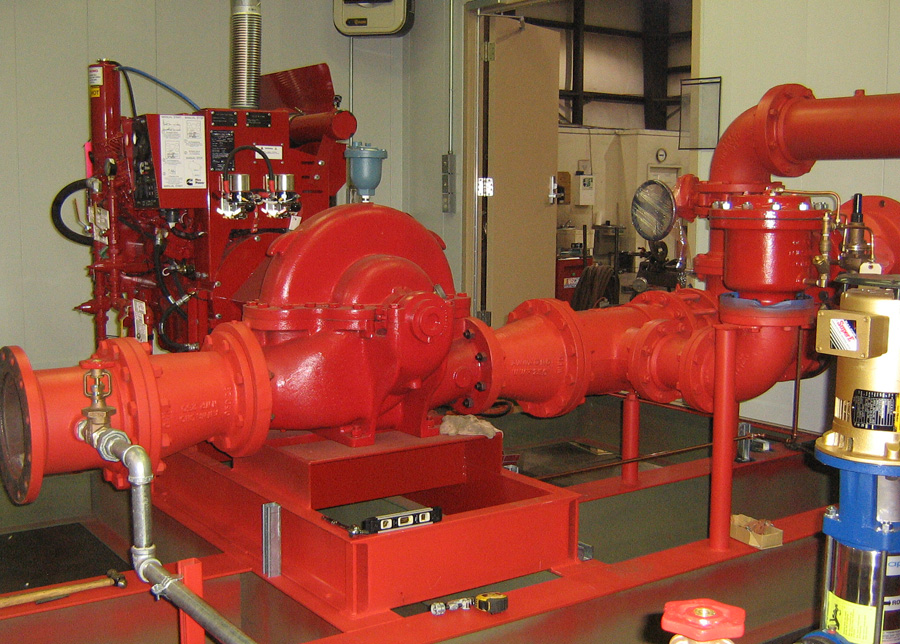Fire fighting pumps, also known as jockey pumps, are a critical part of your building’s fire protection system. They can help keep the pressure in your fire sprinkler system high without wasting water.
Fire sprinkler systems and standpipes, as well as foam systems can require a lot of hydraulic pressure. This can be a challenge for municipal supply lines that cannot meet the demand.
History
As long as humans have lived, fire has posed a serious threat to human life and property. Firefighters have worked tirelessly to find the best ways to extinguish a fire as quickly as possible in order to save lives and minimize damage. One of the most important tools firefighters use is a fire fighting pump, which allows them to deliver water at a high pressure directly to the fire.
The first fire pumps were developed in ancient times. The earliest recorded design was created by Ctesibius of Alexandria in the third century BC, but his work was lost when the great library at Alexandria burned. This first fire pump was a force pump and required several men to operate.
A more practical design was introduced in the 1700s when pumps on wheels, called bucket brigade engines, were built. These portable water pumps allowed for more direct water delivery, but they were still limited by the amount of manpower needed to operate them.
The early 19th century saw the introduction of a single-cylinder, double-acting fire engine pump that improved on the design of the bucket brigade engines. These new pumps were able to handle more fires than earlier models and also had the ability to be driven to the fire site by horses, which allowed for quicker response time.
Types
There are a few different types of fire fighting pump. The most common are horizontal split case pumps that have the components easily accessible and come in a wide range of flow and pressure capacities. These systems are easy to maintain and have long lifespans that can last for decades, making them the ideal choice for many buildings.
Other options include vertical in-line fire pumps that are able to save space by having the suction and delivery lines connected directly to each other. These systems can be used with electric or diesel drivers, but they have a much smaller range of possible applications than the horizontal split cases.
Positive displacement fire pumps are also available for those who need a system that can produce higher levels of pressure. These systems are not as popular as centrifugal fire pumps, but they offer benefits such as their ability to pump foam – which is very effective at putting out oil fires.
Regardless of which type of fire fighting pump is chosen, it’s important to remember that the entire system needs to be designed and sized to meet the hydraulic design requirements of the fire protection system. This means that every part of the fire pump system should be analyzed and reviewed by an expert in order to be safe and reliable.
Hose Sizes
Fire fighting pumps are available in a variety of sizes. There are also different hose types, which are divided into two categories based on use: suction and supply. Suction hoses connect to water sources like fire hydrants and must be made to withstand vacuum pressures so that they don’t collapse when the pump draws in water. Attack hoses, which firefighters use to directly combat the fire, are usually smaller in diameter and must have a high working pressure.
Before buying fire hose, review the manufacturer’s specifications and ask for samples to evaluate. Look at the type of yarn and weave to see how well the hose resists kinking and keeps its flexibility. Also, ask about the construction and compare the specifications to ensure that the hose you’re buying is truly the correct diameter for its application.
You’ll want to find out how long each length of the hose is, and if it comes in 50 or 100 foot lengths. Generally speaking, you’ll get better deals on 50’ lengths because they require one less set of couplings than 100’ lengths do.
When purchasing a new fire hose, find out if it comes with a quick-connect kit or uses a standard storz coupling. Both options can make it much easier to connect and disconnect the hose quickly and accurately. Also, ask whether the hose is tested to its advertised working pressure before it leaves the factory.
PSI & GPM
Fire fighting pumps are rated to produce a specific amount of pressure (usually between 40 and 250 psi) at their rated flow. This is known as the net pressure, and it’s what determines how much water they can pump at that rated flow. However, fire department pumpers don’t operate at their rated flow or pressure all the time. Most of the time, they pump a fraction of their rated capacity at a lower rate, often at far less than 175% of the rated flow, and at pressures significantly lower than the rated net pressure.
For that reason, when sizing a fire pump, it’s not just the GPM that matters, but also the PSI and the churn pressure. A good way to figure these out is to look at the manufacturer’s performance curve and see where the horsepower curve peaks and begins to fall, as that will indicate how much power the pump needs in order to be rated for its churn pressure.
It’s important to note that it isn’t just the fire pump that must be sized to meet these requirements, but also the driver—whether it’s an electric motor or diesel engine. The driver must be able to match the required horsepower demands of the fire pump—even at its lowest duty point on the factory-certified test curve.

